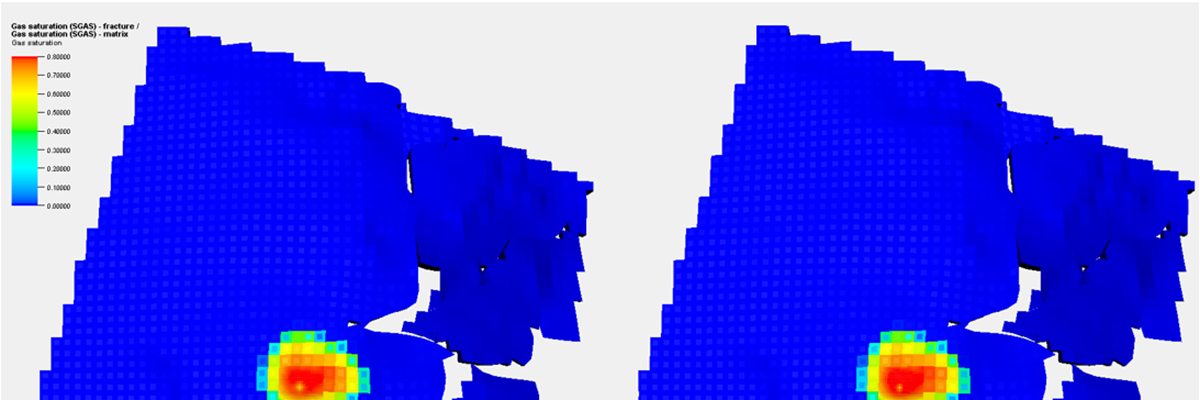High resolution simulation to determine heterogeneity effects on storage estimates in fractured reservoirs

ENOS public report 2.3 coordinated by University of Nottingham
In reservoir characterization study of Hontomín deep saline aquifer the impact of geological heterogeneities on reservoir storage capacity and migration of CO2 plume is explored. This work presents, for the first time, very long-term (up to 200 years) simulations of CO2 injection into the naturally fractured Sopeña Formation, of the lower Jurassic age, at Hontomin. It was simulated as a dual permeability case with Eclipse compositional (Schlumberger software). The matrix permeability of the carbonate reservoir is quite low (0.5 mD) thus fluid transmissivity dominates through the fractures. The reservoir is dissected by eight normal faults which limited its south-east extension and divided it into several segments. The effect of geological heterogeneities was tested through scenario-based modelling and the coefficient of heterogeneity variation for those models gradually increased to greater than 100%. This modelling approach worked well in Hontomín where database is completely scarce.
The plume migration, the reservoir storage capacity and pressure were influenced in different ways by incorporating the heterogeneities. The effect of heterogeneities on reservoir storage capacity was more prominent compared to the plume migration and reservoir pressure. The effect of matrix vertical to horizontal permeability ratio in fractured carbonate reservoir was trivial on storage capacity and plume movement. The impact of faults transmissibility on reservoir pressure was observed when the CO2 plume reached their vicinity.


